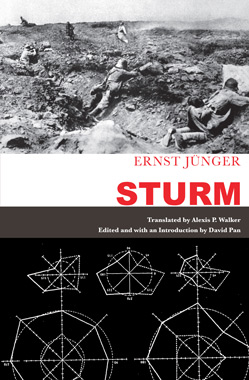 “The vastness and deadly desolation of the field, the long-distance operation of steel machines, and the relay of every movement in the night drew an unyielding Titan’s mask over the proceedings. You moved toward death without seeing it; you were hit without knowing where the shot came from. Long since had the precision shooting of the trained marksman, the direct fire of guns, and with it the charm of the duel, given way to the concentrated fire of mechanized weapons. The outcome was a game of numbers: Whoever could cover a certain number of square meters with the greater mass of artillery fire, won.”
“The vastness and deadly desolation of the field, the long-distance operation of steel machines, and the relay of every movement in the night drew an unyielding Titan’s mask over the proceedings. You moved toward death without seeing it; you were hit without knowing where the shot came from. Long since had the precision shooting of the trained marksman, the direct fire of guns, and with it the charm of the duel, given way to the concentrated fire of mechanized weapons. The outcome was a game of numbers: Whoever could cover a certain number of square meters with the greater mass of artillery fire, won.”
—Ernst Jünger, Sturm, describing the Battle of the Somme, whose centenary is this year.
Save 20% on your purchase of Ernst Jünger’s Sturm when you shop in our online store. Just use the coupon code BOOKS20 during the checkout process.
“The rediscovery of Ernst Jünger’s Sturm, abandoned by its author after its first publication in 1923, significantly alters our understanding of Jünger’s place in modern European literature. The literary and aesthetic moments, frequently seen as secondary in Jünger’s early work, turn out to be constitutive from the very beginning. While the plot deals with the experience of war in 1916, Sturm‘s ultimate concern is the possibility of radical modern art under conditions of extreme violence.”
—Peter Uwe Hohendahl, Jacob Gould Schurman Professor Emeritus of German Studies and Comparative Literature, Cornell University








